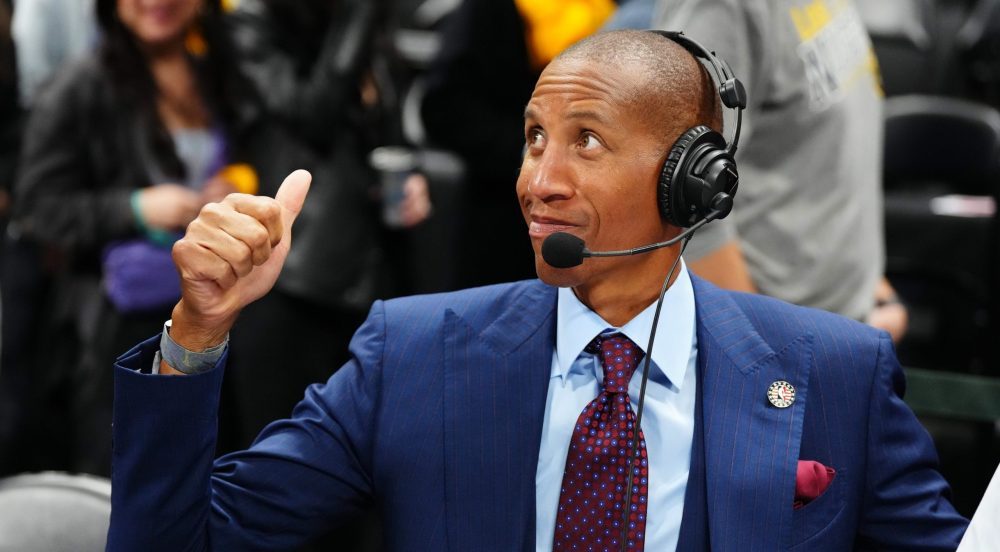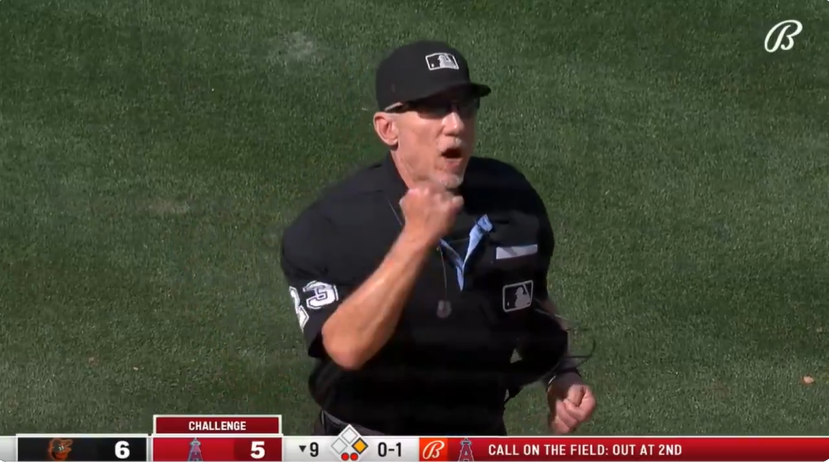It’s a tough time for many web publishers, with concerns over everything from Facebook algorithm changes to pivots to video and more. That makes it perhaps particularly interesting to hear that Sports Illustrated — an outlet with a long web presence, but one that many often think of more in terms of their print product — has posted the best web numbers in their history recently and grown very favorably against the competition.
As per comScore data, SI.com posted its most unique views ever over a six-month span for the period from September through February and posted 61 per cent year-over-year growth in unique visitors, which almost doubled the rate of the next fastest growing in the category among the top 10 sites. SI digital editor Mark McClusky (who joined from Wired in August 2016) spoke to Awful Announcing in March about the success they’re seeing and what’s working for them.
“We’re growing really fast and we’re outpacing the competition, and I think that’s what we’re most proud of,” McClusky said. “We feel like we’ve really upleveled things. I think there was a period of time where we were getting everything sorted, and strategicially doing a lot of planning and executing, and we’ve seen those dividends paid off. We’re growing faster than any of the other top-10 sites, we’re up 61 per cent year over year since September if you look at the comScore numbers, and our last six months have been the biggest six months ever in the history of the site.”
“And in an environment where I think a lot of web publishers are either struggling or not growing as quickly as they had been, I think we’re just really excited to be growing much more quickly than the competition. The final validation of all this comes from your audience, and what we’re doing seems to be resonating with them. More and more of them are coming, and that’s really gratifying.”
McClusky has been at the SI digital helm for around a year and a half now. He said his history with the brand helped him settle in, and his overarching focus has been trying to balance SI’s history of storytelling and journalism with material that connects with new audiences.
“The big thing that we wanted to do when I got here and got my team in place was take a look at what we were doing digitally and try to stay true to our history and what the brand had stood for. I started my career here as a reporter, a baseball reporter and factchecker. So we wanted to stay true to that history of storytelling and deep journalism, everything that’s made SI great for so long, but also find ways to connect with younger audiences and different sorts of audiences, find a voice that respects the past but looks towards the future.”
“We came up with something we talk about internally, and that’s a sort of slogan, ‘Serious journalism, serious fun.’ And making sure we realize, I think a lot of times people think those two things are mutually exclusive, and I don’t think that’s the case at all. Everything from really trying to push into Instagram and just have fun with [food vertical SI Eats, launched in June 2017] and with interesting things happening in the sports world on Instagram, and we’ve seen really good growth there, to, just pointing to a couple of stories we’ve done recently, we did a story that was a scouting report of Michael J. Fox’s character in Teen Wolf as a basketball player, a written scouting report. That’s probably something SI wouldn’t have done a year and a half ago, two years ago.”
McClusky said it’s important for SI to be known for cultural and fun things, but also to maintain their history of breaking news and telling deep, serious stories.
“We did a contest on the ultimate backup catcher as sort of this weird position in baseball. We launched SI Eats, really trying to connect the culture of food around sports to fans and the experience of going to games, just really taking a broader cut at our world and trying to take ourselves…you know, it’s not that we don’t take what we do seriously, we try to take ourselves less seriously when it makes sense to take ourselves less seriously. On the flip side, we’re breaking stories, like the Mark Cuban and the Mavs thing a few weeks ago, the Jerry Richardson thing, where he announced he’s going to sell the team, we take that stuff super seriously. And both of them resonate with our audience.”
As per SI Eats in particular, McClusky said even though food isn’t something SI has always covered, that vertical seemed like a logical fit for the site.
“Food is so tied up with our experience of sports as fans, and I think that’s what we’ve been trying to connect with a little more, the passion and fandom around sports. So, whether it’s, the most cliched version is your Super Bowl party and finding recipes for that, but it’s also like ‘Great food when you go to a ballpark,’ or an arena. It’s looking at what athletes are eating to fuel their performance. Once you start thinking about food through a sports lens, or even more interestingly, sports through a food lens, you find that there are a lot of connections there. And the more we thought about it, the more it just seemed like a natural place to follow our interests as fans and as journalists.”
Another change came on the NFL side, where ahead of last NFL season, they combined the MMQB team with their regular football team to get everyone on the same page. McClusky said that brought them plenty of traffic success.
“We had had sort of the MMQB and Peter’s team, and then there had been sort of another group of people working on football, a bifurcation there, and what we did was really work to integrate those two teams so there was one team covering football at Sports Illustrated. And, you know, we set that team some aggressive goals and targets, and knew that it would be a push to get there and that everybody would have to be on the same page, and I’m thrilled that we beat all of those targets. We’ve never had a bigger audience for our football coverage than we did this year, and I think a big part of that is working smarter and more efficiently with some of the best writers in the business and some of the people who are most plugged in to the NFL.”
The latest
“We’re really happy with how things have been going for The Crossover,” McClusky said. “I think part of what makes The Crossover so different is that it tries to talk about the lifestyle part of basketball and basketball fandom as well as the on-the-court. I think we have amazing on-the-court coverage, I think when you have people like Lee Jenkins and Chris Ballard writing features about players and their lives, it’s amazing, but also, we write about sneaker culture, we write about some of the ways NBA players have been socially active in some of the political things going on. We look at a lot of this as finding ways to really forge that connection between the action on the field and the rest of the culture as well.”
Why launch a vertical rather than just a NBA subsection, and what’s the difference between the two? McClusky said verticals are more about an overarching coverage tone and mission.
“I think there’s a little more personality associated with it than just saying ‘It’s Sports Illustrated’s basketball coverage.’ I think when you try and think of it as sort of a vertical or maybe a sub-brand to Sports Illustrated, you’re trying to build an outlook, a voice and philosophy around it. And we’ve worked pretty strongly with those editors to try and hone that and come up with something that’s not just ‘Covering the NBA,’ but ‘How are we covering the NBA? What’s important about the NBA to us? Where do we think that it fits in with the culture, with the different communities, with everything else that we’re doing?’ I think that’s the distinction; you’re trying to get away from it being a commodity, from covering it in a commodified way, to cover it in a really unique way with a really unique point of view.”
A pre-McClusky vertical was the Tech and Media hub. He said that area hasn’t received a ton of recent focus, but there are plans to do more on the technology front going forward.
“It’s obviously something that’s pretty near and dear to my background. I wrote a book about sports science and technology, I worked at Wired for a decade, so they’re things I’m personally very interested in. I think it’s something we haven’t pushed on quite as hard in the past 16 months as some other things, I think we needed to nail down some of just the core and get that sort of solidified and moving in the right direction, but that’s definitely still an area that is of interest and will continue to be part of our coverage.”
SI has also launched some Spanish-language coverage, and McClusky said that’s been a big success.
“It’s working great. We’ve found a whole new audience, and not just soccer, soccer is probably the area where we’ve found the biggest audience, but we’ve also had success in things like boxing. The GGG-Canelo fight, we did Spanish-language coverage as well as English coverage, and got some nice traction on that. Look, it’s a huge population that’s young, that’s growing very quickly and that’s very passionate about sports. It seems like an opportunity to build…what we really focused on at the start was building a relationship with that community, letting them know that we’re here, that we’re doing this. We can devote more and more resources as we have success there, and we think it’s a really cool opportunity to connect with an audience that might not have had a connection with SI before.”
Overall, McClusky said the key for them is not to get too focused on any one platform or traffic source, but to use all of those to build a successful overall picture.
“I like to think of SI as a digital storyteller across all platforms. A huge part of that is SI.com, but I think a big part for us is diversifying, not just the traffic sources to SI.com, but all of the platforms on which we think we can tell great stories. Whether that’s on Twitter, whether that’s on Facebook…we’re doing some video stuff on Facebook that we’re really proud of, we’ve got a trivia show called Next Question that’s getting viewership that’s nearing six figures on some episodes, and we’re super excited about that. It’s just a fun trivia show. Things like leveraging Instagram Stories to tell interesting things.”
“… Twitter is obviously a huge part of the sports conversation and we love the level of interaction and the excitement that we see there, both on regular tweets and on video. I think a lot about that diversity and not being overly reliant on any one thing. We’ve seen a lot of publishers talk about the challenges they’ve had with the recent Facebook algorithm changes, and you know, Facebook drives significant traffic to our site, but so do a lot of other things. We’ve worked really hard to make sure that we’re reliant not just on one partner or one distribution method so that when the landscape does change, we’re in position for that.”





